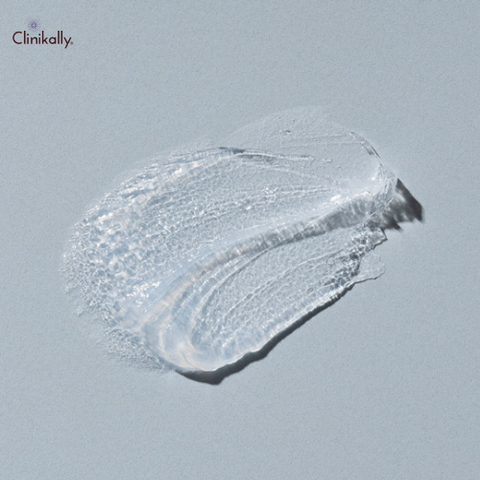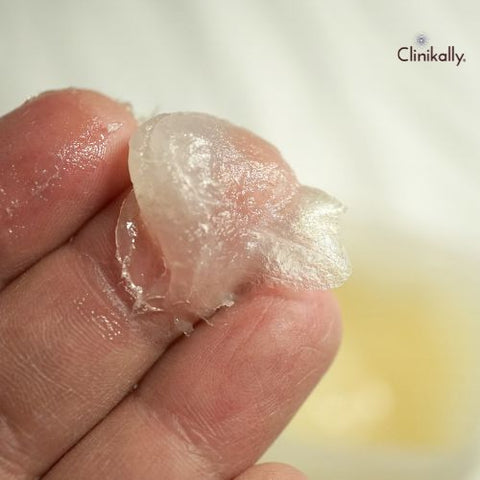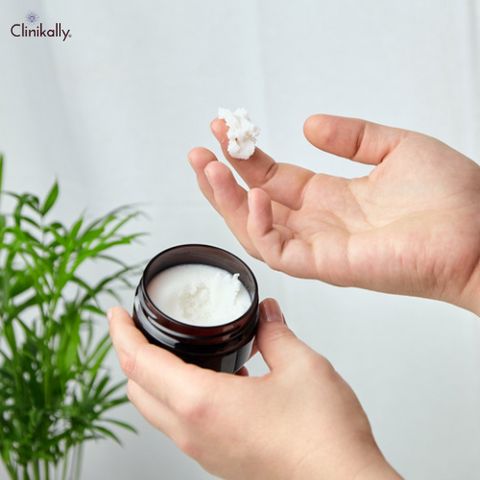Petrolatum, also known as petroleum jelly, has been a staple ingredient in skincare products for over a century. Its effectiveness as an emollient and occlusive agent has made it a popular choice for moisturizing dry skin as well as damaged skin, aiding in wound healing, and protecting skin from external irritants. However, with concerns around its potential environmental impact and skin sensitivity, some people are questioning its continued use in commercial skincare products. In this blog post, we will explore the benefits and drawbacks of petrolatum in skincare and look at some natural alternatives that can be used instead. We will also discuss the importance of patch testing and selecting high-quality skincare products for optimal skin health.
What is Petrolatum?

Petrolatum is a semi-solid mixture of hydrocarbons that is derived from crude oil. It is a colourless, odourless substance that has a greasy texture and a long history of use in the skincare industry. Petrolatum is commonly used as an emollient and occlusive agent in skincare products due to its ability to form a protective barrier on the skin's surface, preventing moisture loss and promoting healing.
The History of Petrolatum in Skincare
Petrolatum has been used in skincare products for over a century, with the earliest recorded use dating back to the late 1800s. Its popularity grew in the early 1900s when it was first marketed as Vaseline, a multi-purpose ointment that could be used for everything from chapped lips to minor burns. During World War II, petrolatum was used extensively in medical settings to treat wounds and protect the skin from harsh environmental conditions. Today, petrolatum remains a common ingredient in many skincare products, but it has also faced increasing scrutiny due to concerns related to its environmental impact and potential health risks.
Benefits of Petrolatum in Skincare

Despite the controversies surrounding petrolatum, it still offers several benefits when it comes to skincare. Here are some of the key benefits of petrolatum in skincare:
#1 Petrolatum as an Emollient
Petrolatum is an excellent emollient, which means that it helps to moisturize the skin and keep it soft and smooth. When applied to the skin, petrolatum creates a protective barrier that locks in moisture and prevents it from evaporating, which helps to hydrate the skin and prevent dryness and flakiness.
#2 Petrolatum as an Occlusive Agent
Petrolatum is also a highly effective occlusive agent, which means that it helps to form a barrier on the skin's surface that prevents moisture loss and protects the skin from external irritants. This makes it an excellent ingredient for people with dry, sensitive, or irritated skin, as it can help to soothe and protect the skin.
#3 Petrolatum as a Wound Healing Agent
Petrolatum is also known for its wound-healing properties. When applied to minor cuts, burns, or scrapes, petrolatum can help to promote healing by creating a barrier that protects the wound from bacteria and other harmful substances. It also helps to keep the wound moist, which can speed up the healing process and reduce the risk of scarring.
Potential Concerns about Petrolatum in Skincare

While petrolatum offers several benefits for the skin, there are also some potential concerns that people should be aware of when using skincare products that contain petrolatum. Here are some of the main concerns related to petrolatum in skincare:
#1 Petrolatum and Skin Sensitivity
Petrolatum has long been used as an effective emollient in skincare products due to its ability to create a protective barrier on the skin's surface and help retain moisture. However, for some individuals, petrolatum can cause skin sensitivity and other adverse reactions.
People with eczema or other sensitive skin conditions are more likely to experience skin irritation and inflammation when using petrolatum-based products. This is because petrolatum can create a physical barrier on the skin that traps heat and sweat, which can exacerbate the symptoms of these conditions. Additionally, petrolatum can sometimes cause an allergic reaction in certain individuals, leading to symptoms such as itching, redness, and swelling.
To reduce the risk of skin sensitivity when using petrolatum-based skincare products, it is important to patch test the product before using it on larger areas of the skin. This involves applying a small amount of the product to a small area of the skin and waiting 24-48 hours to see if any adverse reactions occur. If no adverse reactions occur, the product can be used more widely. It is also important to avoid using petrolatum-based products on broken or irritated skin, as this can increase the risk of adverse reactions.
#2 Petrolatum and Acne
The link between petrolatum and acne has been a topic of debate among skincare experts. While some studies have shown that petrolatum can clog pores and worsen acne, other studies have found no significant correlation between the use of petrolatum and acne breakouts.
It's important to note that not all petrolatum-based products are created equal. Some formulations are less likely to cause acne than others, depending on the other ingredients they contain. For example, a petrolatum-based moisturizer that is also formulated with salicylic acid or benzoyl peroxide may actually help to prevent acne breakouts, as these ingredients can help to clear pores and reduce inflammation.
If you have oily or acne-prone skin, it's a good idea to choose skincare products that are labelled "non-comedogenic," which means that they are less likely to clog pores and cause acne. Additionally, it's important to thoroughly cleanse your skin before applying any skincare products, as this can help to remove excess oil, dirt, and bacteria that can contribute to acne breakouts.
#3 Environmental Concerns related to Petrolatum.
There are also environmental concerns related to the use of petrolatum in skincare products. Petrolatum is a by-product of the oil industry, which means that its production contributes to carbon emissions and other environmental issues. Additionally, some studies have suggested that petrolatum may not biodegrade easily, which can lead to pollution and other environmental problems.
How to Use Petrolatum Safely in Skincare

If you decide to use skincare products that contain petrolatum, there are several steps you can take to ensure that you use them safely and effectively. Here are some tips for using petrolatum safely in your skincare routine:
Patch Testing Petrolatum Products
Before using any new skincare product that contains petrolatum, it's important to patch-test it first. This involves applying a small amount of the product to a small area of skin, such as behind the ear or on the inner forearm, and waiting 24 to 48 hours to see if any allergic reactions or skin irritations occur.
Choosing High-Quality Petrolatum Products
When choosing skincare products that contain petrolatum, it's important to look for high-quality products that are formulated with pure, medical-grade petrolatum. Avoid products that contain added fragrances, dyes, or other unnecessary ingredients, as these can increase the risk of skin irritation and other adverse reactions.
Natural Alternatives to Petrolatum
If you're concerned about the potential risks associated with petrolatum, there are several natural alternatives that you can use in your skincare routine. For example, plant-based oils such as jojoba oil, coconut oil, and shea butter are all excellent emollients that can help to moisturize and nourish the skin. Be sure to patch test any new product, natural or otherwise, before using it all over your skin.
Petrolatum in Commercial Skincare Products

Petrolatum is a commonly used ingredient in many commercial skincare products, particularly those that are designed to moisturize and protect the skin. Here are some examples of the types of skincare products that may contain petrolatum:
Petrolatum in Lip Balms
Lip balms are a popular type of skincare product that often contains petrolatum. Petrolatum is an excellent emollient that can help to soothe and moisturize dry, chapped lips. However, it's important to choose a lip balm that contains high-quality petrolatum and other nourishing ingredients, as some low-quality products may actually worsen dryness and irritation.
Petrolatum in Moisturizers
Petrolatum is also a common ingredient in many moisturizers, particularly those that are formulated for dry or sensitive skin. Petrolatum can help to lock in moisture and prevent dehydration, which can help to improve the skin's overall texture and appearance. However, as with any skincare product, it's important to choose a high-quality moisturizer that contains pure, medical-grade petrolatum and other nourishing ingredients.
In conclusion, petrolatum is a versatile and effective ingredient that can offer numerous benefits for the skin. As an emollient, occlusive agent, and wound healing agent, petrolatum can help to soothe, moisturize, and protect the skin. However, there are also potential concerns associated with petrolatum, including skin sensitivity, acne, and environmental impact. To use petrolatum safely and effectively in your skincare routine, it's important to choose high-quality products, patch-test new products, and consider natural alternatives. By taking these steps, you can enjoy the benefits of petrolatum while minimizing the risks and ensuring that your skin looks and feels healthy and radiant.
















